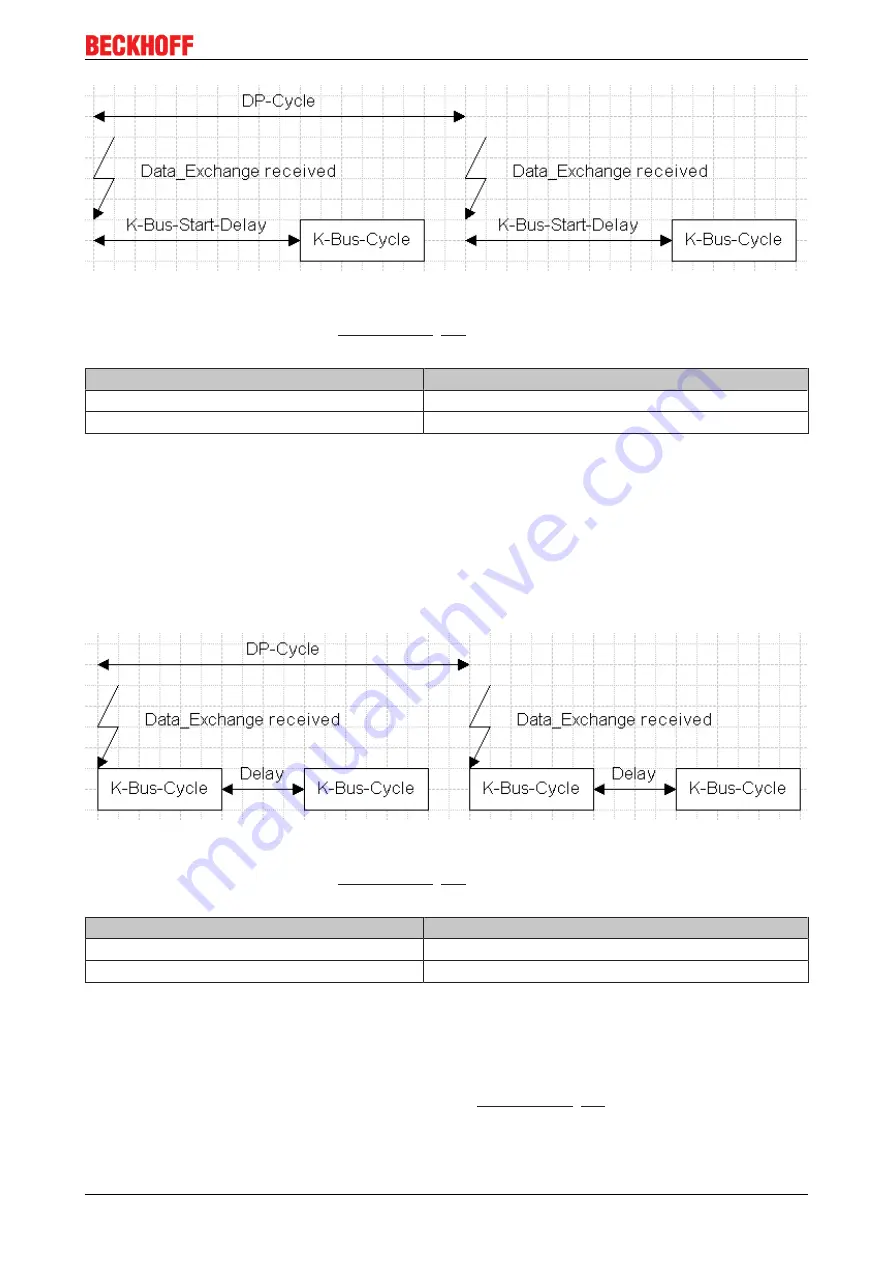
PROFIBUS DP communication
BK3xx0
55
Version: 4.3.0
Fig. 42: K-bus - synchronous mode with optimized input update (one cycle)
The delay time is set by means of the
(in µs, in Motorola format). The extended GSD file
of the Bus Coupler is, however, necessary for this:
Byte
Value: Description
13
Delay time (in µs) high byte
14
Delay time (in µs) low byte
Synchronous mode with optimized input update (two cycles)
In the third mode of synchronous operation, the advantages of the other two operating modes are combined.
Two K-bus cycles are carried out within one DP cycle. The first cycle begins immediately after reception of
the Data_Exchange telegram from the master, which means that the outputs are generated as quickly as
possible. The second cycle is started after a delay time that begins after completion of the first cycle has
elapsed, so that the inputs are as recent as possible. It is important here to ensure that two times the
duration of the K-bus cycle, plus the delay time, plus approx. 20 % (to allow for the lower priority processes
on the coupler) is shorter than the DP cycle time (which, under TwinCAT, means the cycle time of the
associated task).
Fig. 43: K-bus - synchronous mode with optimized input update (two cycles)
The delay time is set by means of the
(in µs, in Motorola format). The extended GSD file
of the Bus Coupler is, however, necessary for this:
Byte
Description
13
Delay time (in µs) high byte
14
Delay time (in µs) low byte
Dummy output byte
The Bus Coupler's PROFIBUS DP ASIC can only generate an interrupt after reception of a Data_Exchange
telegram if output data has been received. This means that at least one output byte must be transferred via
DP in synchronous mode. If only input terminals are plugged in, and no output data is therefore present, a
dummy output byte can be configured. It is activated in the
, and must be entered as the
module in the CfgData. The extended GSD file for the Bus Coupler is, however, necessary for this:
















































